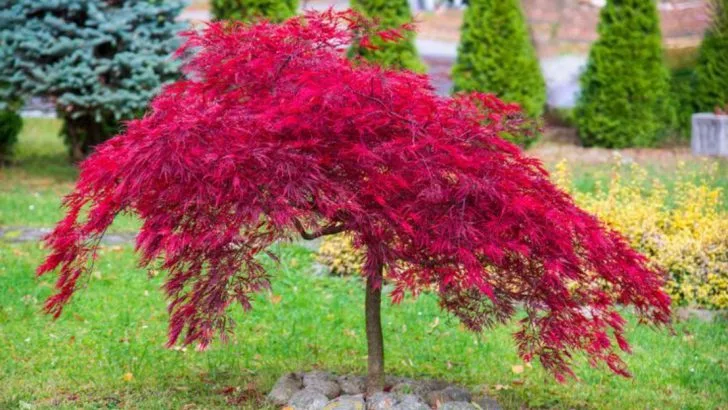When the days grow short and the frost settles in, most gardens lose their vibrant charm—but not all trees fade into the background. Some ornamental trees are built to shine through harsh winters, standing strong with textured bark, colorful berries, or graceful silhouettes that add beauty even in the coldest months.
These 17 stunning trees don’t just survive winter—they elevate it. Perfect for bringing structure, visual interest, and even wildlife appeal to your landscape when everything else is bare, these picks will help your garden stay alive with character all year long.
Japanese Maple
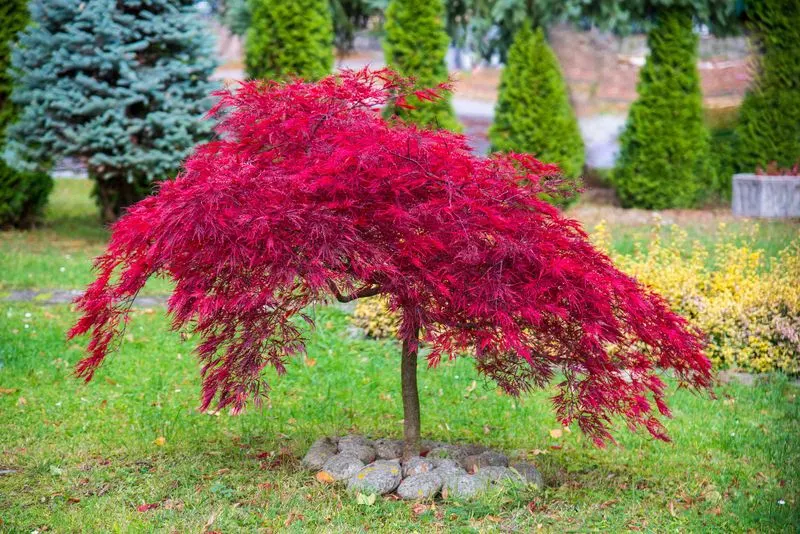
With an elegance that transcends seasons, the Japanese Maple stands as a testament to enduring beauty. During winter, its delicate branches form intricate patterns against the sky, creating a natural artwork. While its vibrant fall foliage is a highlight, the tree’s graceful silhouette in winter captivates equally. Its bark, smooth and gray, offers a subtle contrast to the white snow. Renowned for its adaptability, this tree thrives in various climates, making it a cherished choice. Whether in a small courtyard or expansive garden, it leaves a lasting impression with its sculptural presence.
Winterberry Holly
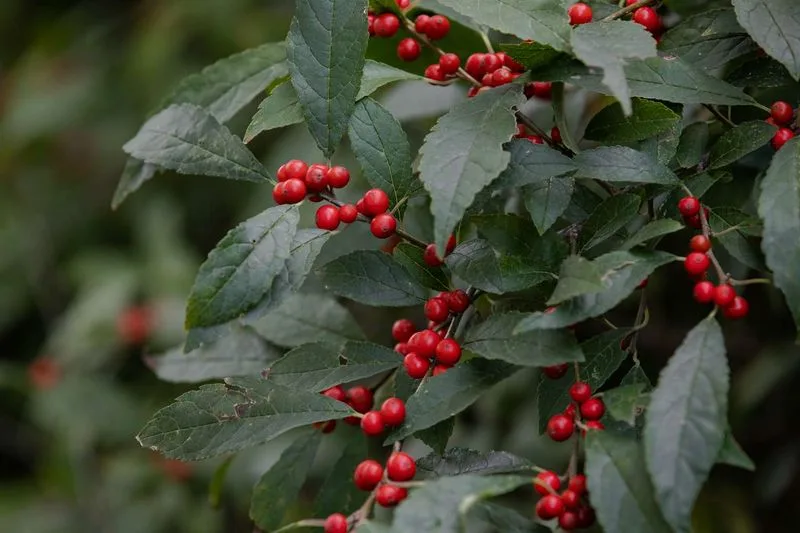
Winterberry Holly brings a splash of color during the monochrome months. Its bright red berries, stark against bare branches, attract not only human admirers but also winter birds. This deciduous holly loses its leaves, making the berries more pronounced. Adaptable to wet conditions, it’s ideal for rain gardens and low spots. Plant it in groups to create an eye-catching winter display. The berries persist even as the snow falls, ensuring a vivid spectacle. Its striking appearance and ecological benefits make it a top pick for sustainable gardening.
Dogwood Cornus
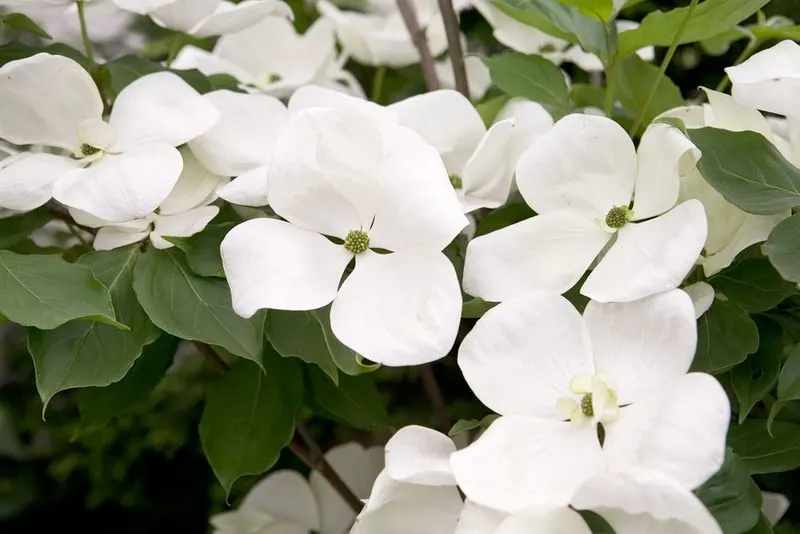
Few trees can boast a winter display as striking as the Red-twig Dogwood. Its fiery stems paint the landscape with warmth, even in the coldest months. The bright red branches stand out vividly against a snowy backdrop, creating a dramatic visual. Tolerant of various soil types and conditions, this tree thrives where others might not. Its easy-to-grow nature makes it a favorite among novice and expert gardeners alike. Pruning encourages new growth, which intensifies the red color, ensuring the tree remains a vibrant focal point each winter.
Birch Tree
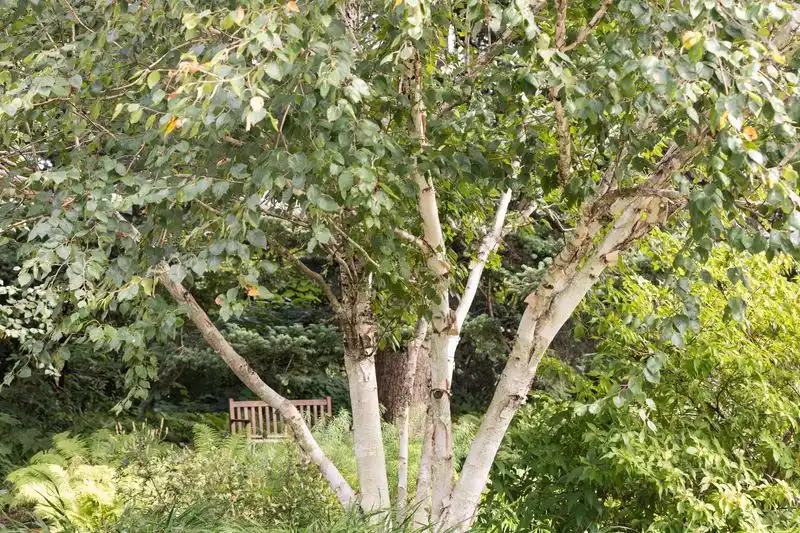
The Silver Birch, with its iconic white bark, becomes a beacon of beauty during winter. Its slender trunks and peeling bark add texture and visual interest to any landscape. As the leaves fall, the tree’s elegant form is revealed, showcasing a network of fine branches. Known for thriving in various conditions, it requires minimal maintenance. Its light-colored bark brightens the garden, offering a perfect contrast to the deep greens of evergreens. This adaptability and aesthetic appeal make it a popular choice for year-round interest.
Crabapple Tree
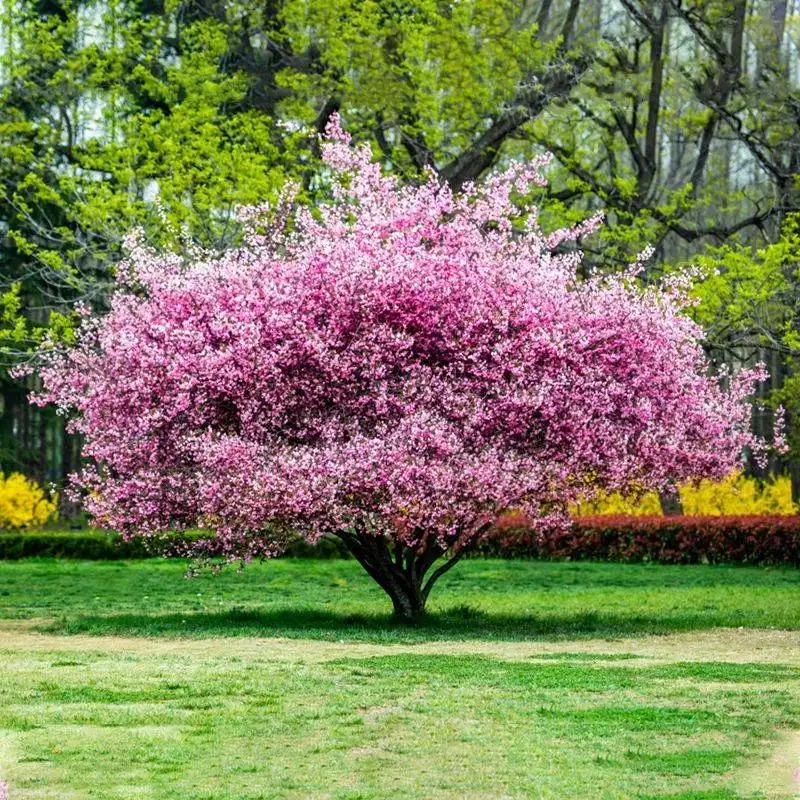
Crabapple trees bring charm and color to the winter landscape with their clusters of small, persistent fruits. These vibrant red apples hang like festive ornaments, providing visual interest and food for wildlife. Tolerant of cold temperatures and various soil types, they are easy to care for. The tree’s spreading form and textured bark add depth to the garden, even as snow blankets the ground. Planting a crabapple tree ensures a dynamic display year-round, with spring blooms, summer foliage, and winter fruiting all contributing to its allure.
Holly Tree

The Holly tree, with its glossy evergreen leaves and bright red berries, is a winter icon. Its vibrant foliage remains lush throughout the coldest months, offering a splash of color when most trees are bare. The berries, often used in holiday decorations, attract birds and add to its visual appeal. Hardy and versatile, the Holly tree thrives in a variety of conditions, making it a resilient choice for many landscapes. Its traditional association with winter festivities and enduring beauty makes it a perennial favorite among gardeners and nature enthusiasts alike.
Evergreen Magnolia
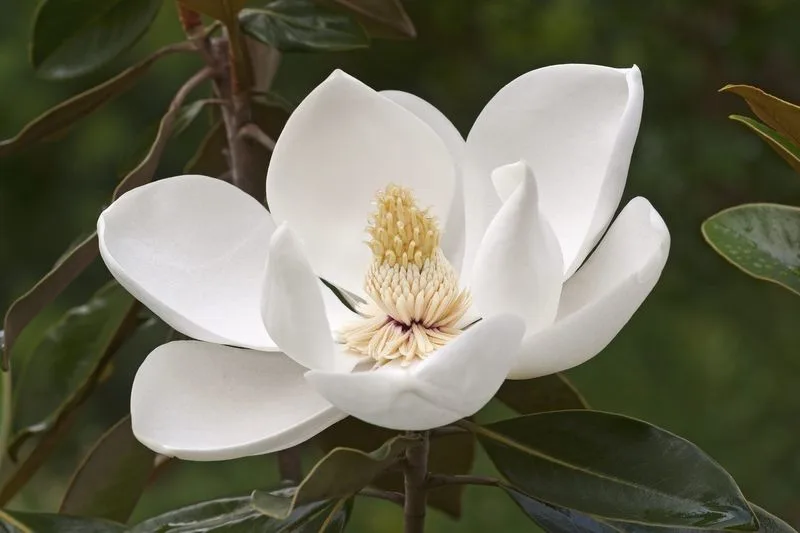
The Evergreen Magnolia stands as a symbol of grandeur and resilience. Known for its glossy green leaves, this tree maintains its majestic appearance even in winter. The leaves’ underside, often a rusty brown, creates a unique visual contrast. Suited to warmer climates, it adds a touch of southern elegance to gardens. Its large, fragrant flowers may not bloom in winter, but the tree’s stature and rich foliage ensure it remains a captivating presence. Ideal for those seeking a touch of sophistication in their landscape year-round.
European Beech

European Beech trees bring a touch of warmth to the coldest months with their copper-colored leaves that persist through winter. The smooth, gray bark adds elegance, offering a striking contrast against the winter landscape. Perfect for creating hedges or standalone specimens, they are versatile and grow well in various conditions. The retained leaves rustle gently in the wind, providing auditory delight. This tree’s timeless appeal lies in its combination of beauty and practicality, making it a valued addition to gardens seeking both form and function.
Chinese Fringe Tree
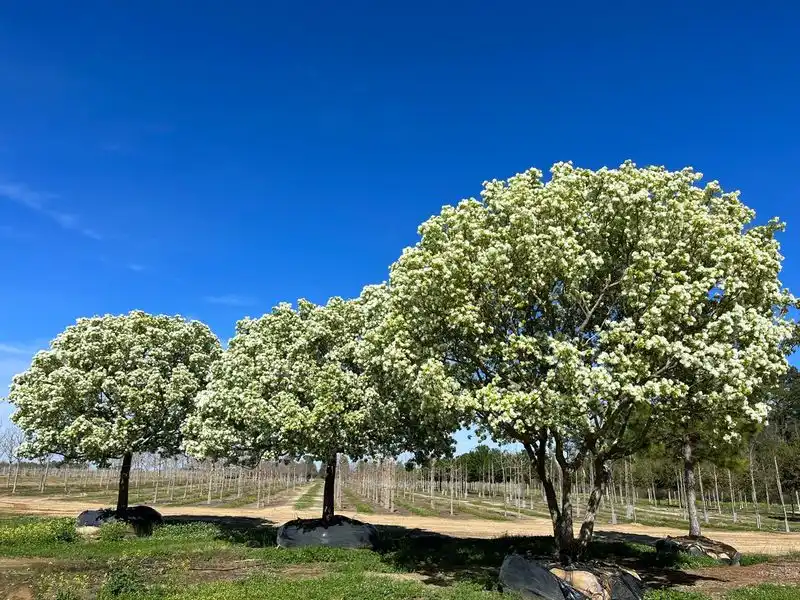
This tree captivates with its unique form and delicate beauty. The Chinese Fringe tree, though often celebrated for its spring flowers, maintains interest in winter through its twisted branches and textured bark. Frost accentuates its intricate structure, creating an ethereal appearance on cold mornings. It grows well in various soils and tolerates urban conditions, making it a flexible choice for city gardens. Its understated elegance and adaptability are complemented by low maintenance needs, offering both aesthetic and practical benefits for garden enthusiasts.
Arbutus Tree
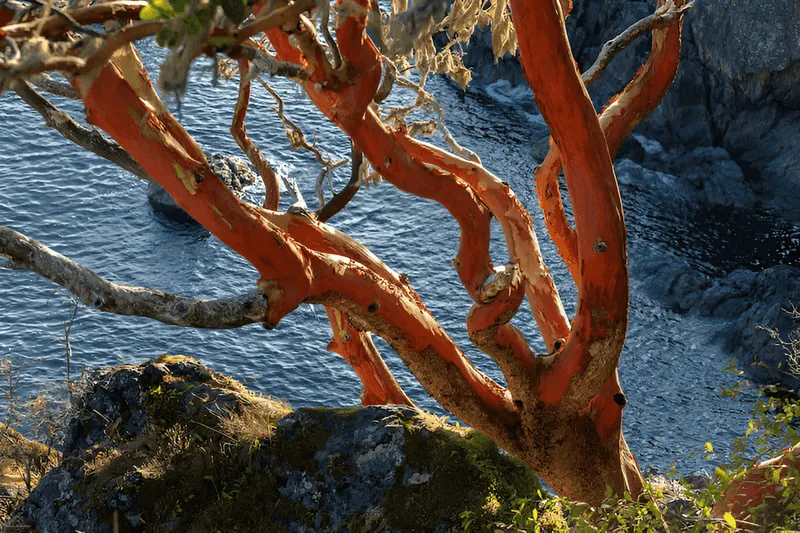
The Arbutus tree enchants with its smooth, cinnamon-colored bark that peels away to reveal fresh layers beneath. Even in winter, its striking appearance commands attention. Evergreen leaves add another layer of interest, ensuring this tree remains a focal point year-round. Resistant to drought and thriving in poor soils, it’s an excellent choice for challenging locations. The unique bark texture and evergreen nature make it an attractive option for adding structure and color to winter gardens. Its resilience and beauty are as enduring as the tree itself.
Paperbark Maple
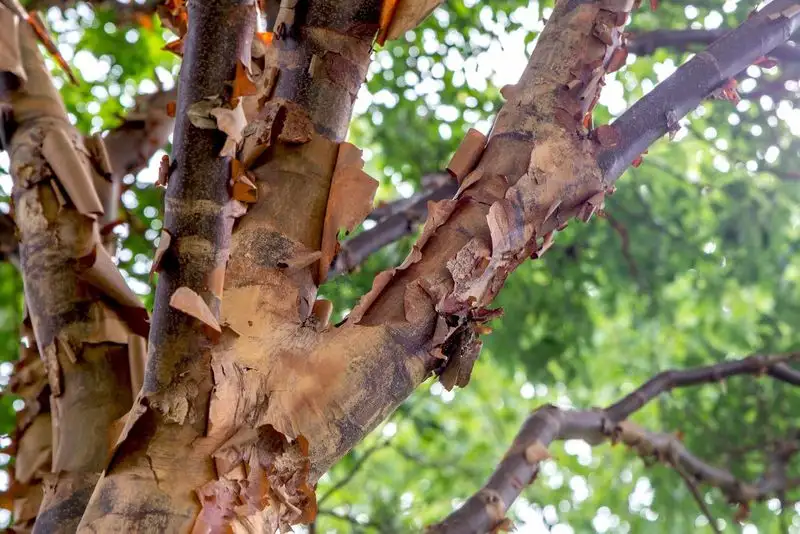
With its richly hued, exfoliating bark, the Paperbark Maple offers a visual treat even in winter. Its coppery tones glow warmly against the starkness of snow, providing a striking focal point. As an added delight, the bark peels in thin, curling strips, revealing new layers beneath—a feature that captivates year-round. The tree’s compact form makes it suitable for smaller gardens. This maple is not just about looks; it’s hardy and low-maintenance, thriving in various climates. Its unique bark and graceful structure ensure it remains a garden highlight.
Cork Oak

The Cork Oak’s deeply textured bark provides both visual and tactile interest. Even in winter, its rugged appearance draws the eye, offering a unique landscape element. While primarily grown for its cork, the tree’s ornamental value is significant. It thrives in Mediterranean climates, adding a touch of the exotic to suitable gardens. The evergreen nature ensures greenery year-round, and the bark’s natural insulation benefits both the tree and surrounding wildlife. This blend of utility and beauty makes it a fascinating addition to diverse landscapes.
Blue Spruce
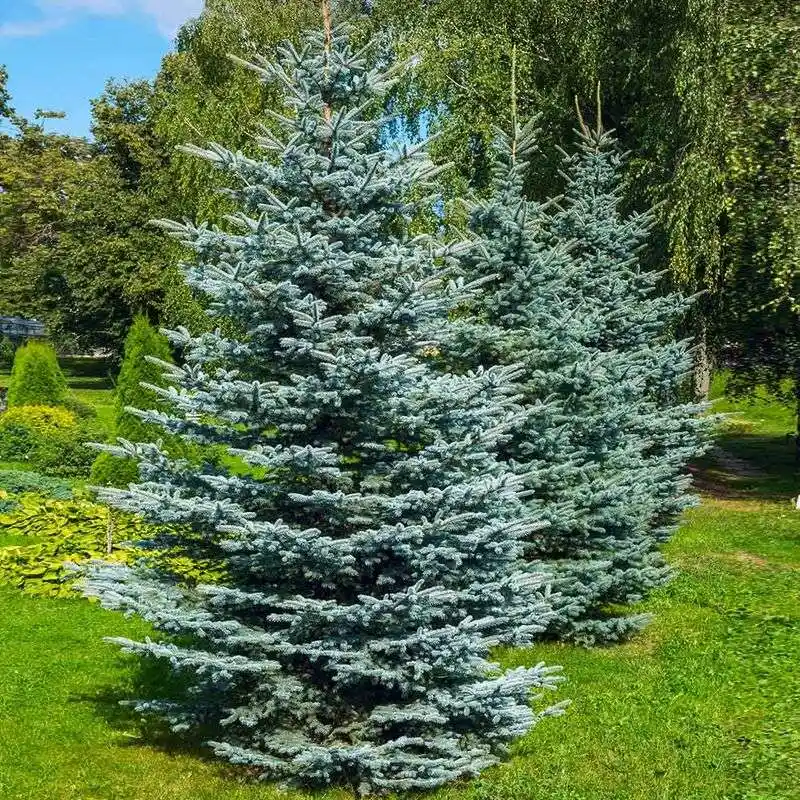
Renowned for its striking blue-gray needles, the Blue Spruce brings a touch of alpine elegance to any garden. Its dense branches form a perfect pyramid, providing structure and color throughout winter. This evergreen requires little maintenance and is resistant to pests, making it a reliable choice for many. It thrives in colder climates, where its distinctive hue becomes even more pronounced. The tree’s natural beauty and resilience make it a standout feature in both formal and naturalistic settings, appealing to those who appreciate understated elegance.
Scots Pine
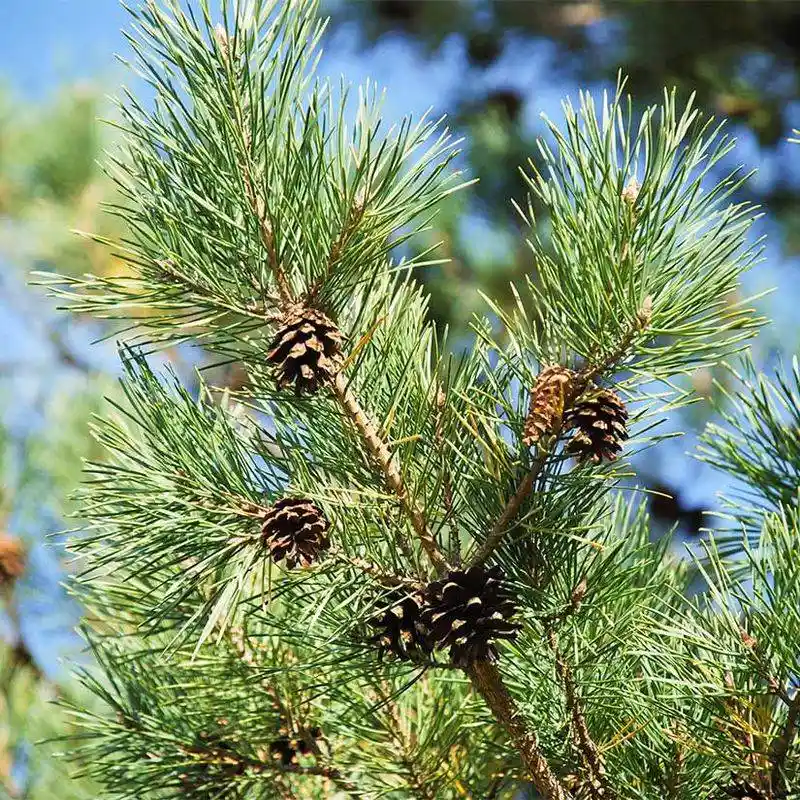
With its tall and stately form, the Scots Pine stands as a sentinel in the winter landscape. Its rugged bark and evergreen needles provide visual interest, while its adaptability makes it a popular choice. Thriving in poor soils and withstanding harsh climates, it’s a testament to nature’s resilience. The tree’s distinctive silhouette adds height and structure, enhancing winter gardens with its presence. This pine is not only beautiful but beneficial for wildlife, offering shelter and food. Its enduring qualities and bold appearance are hard to overlook.
Yew Tree
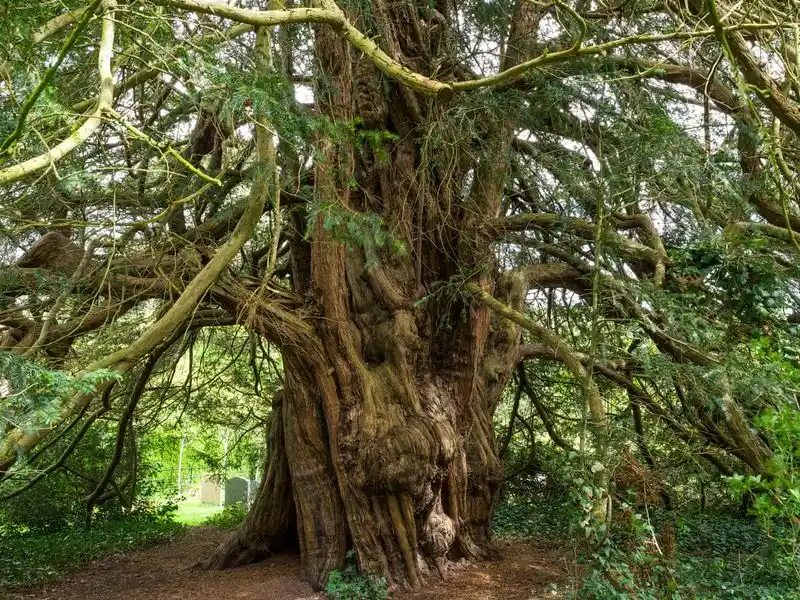
The Yew tree, with its dense, dark green foliage and bright red berries, offers a striking contrast against winter’s bleakness. Known for its longevity and adaptability, it thrives in various conditions, from shaded areas to full sun. Often used in hedging, it provides privacy and windbreaks, while its berries attract birds, enhancing biodiversity. The evergreen nature ensures year-round beauty, making it a garden staple. Its historical significance in landscapes and versatility in garden design contribute to its timeless appeal. A true embodiment of durable elegance.
Manzanita
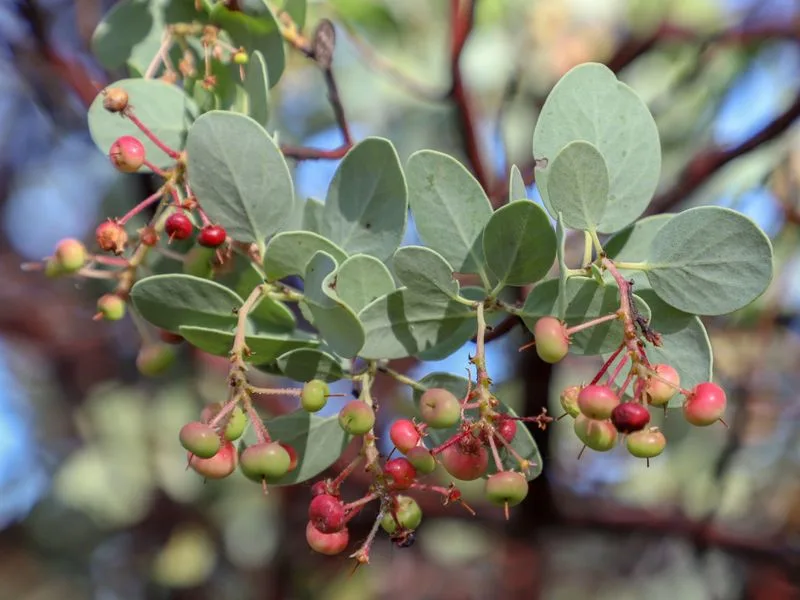
Manzanita trees are admired for their distinctive red bark and evergreen leaves. Even in winter, their twisted branches create a captivating silhouette. This tree thrives in arid conditions, making it ideal for water-wise gardens. The smooth bark is not only visually appealing but also provides a tactile experience. As a native to the western United States, it supports local ecosystems, offering nectar and shelter for wildlife. Its striking appearance and drought tolerance make it a valuable addition to landscapes aiming for a balance of beauty and sustainability.
Boxwood

Boxwood shrubs bring formality and structure to winter gardens with their dense, evergreen foliage. These versatile plants are easy to shape, making them perfect for topiary and hedges. Even under a layer of snow, their robust form stands out, adding year-round interest. Adaptable to various soil conditions and climates, boxwoods are a favorite among gardeners seeking low-maintenance elegance. Their ability to withstand pruning and shaping ensures they fit seamlessly into both traditional and contemporary garden designs. A staple for those who value enduring charm.

